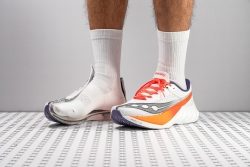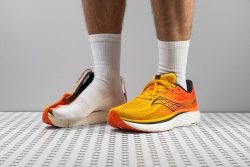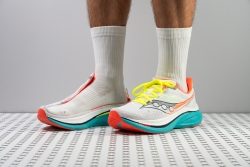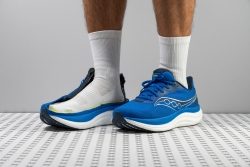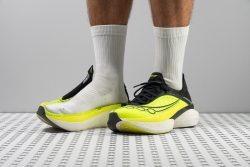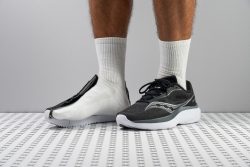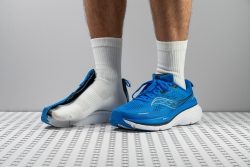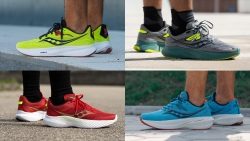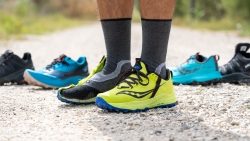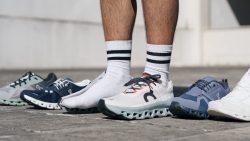7 Best Saucony Running Shoes in 2025
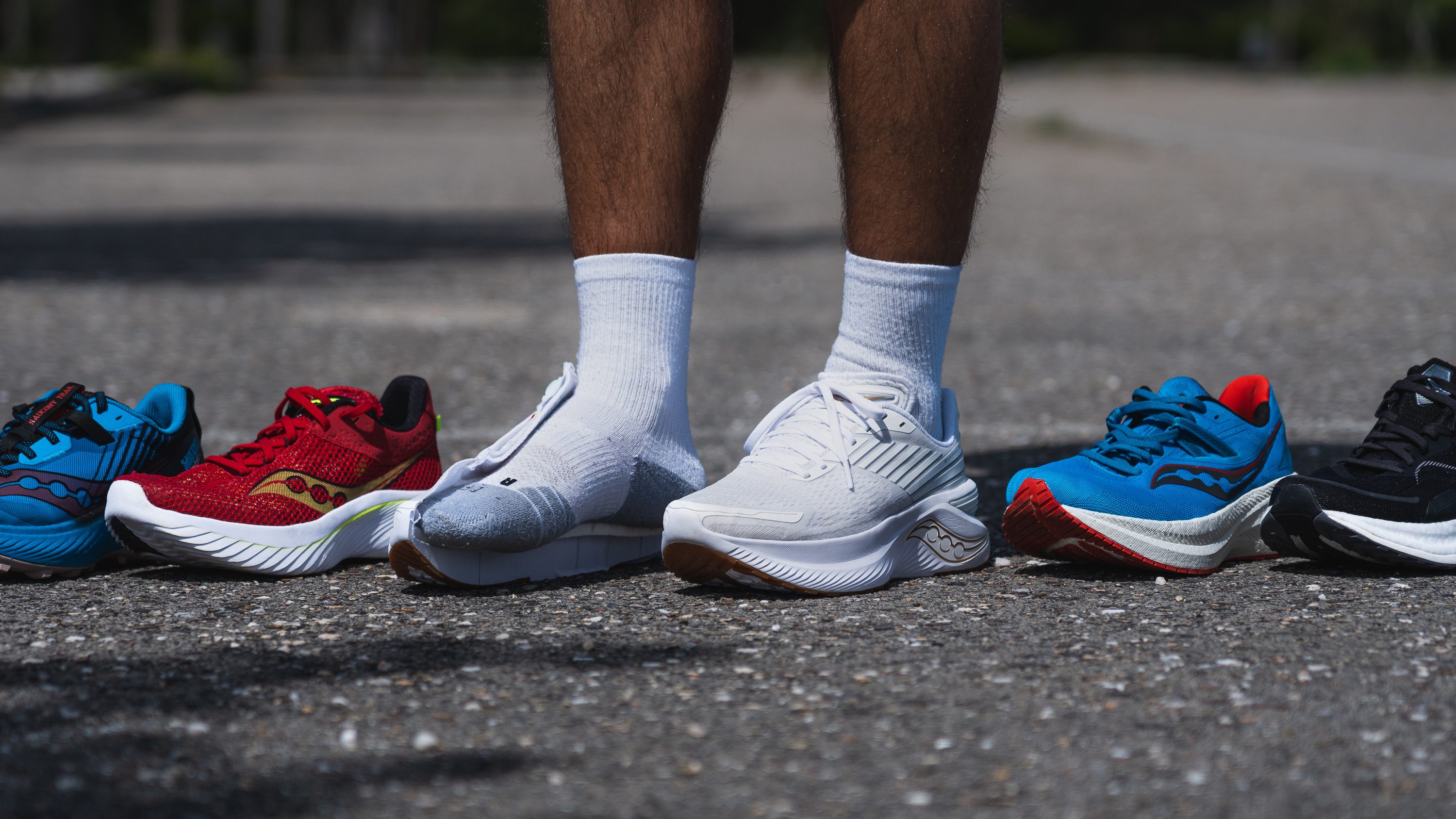
We buy shoes ourselves. We earn commissions when you buy through us, at no extra cost. Why trust us
With a 120+ year history, Saucony has gained extensive experience in the running shoe industry. Not to mention that it has several lineups that have stood over 10 iterations, retaining a wide fan base.
We’ve been following Saucony for years (some of us even decades) and have tested many of their releases to find the best and brightest. Famous for their speed-oriented Endorphins, we have also selected some excellent daily trainers, supportive shoes for flat feet, as well as some wallet-friendly options.
If you want to learn more about Saucony shoes, what makes them different from the rest, which technologies they use and how they work, read our guide section. It is full of nerdy details and lab data!
How we test Saucony running shoes
As a team full of running shoe enthusiasts with an independent shoe lab, we thoroughly analyse every new release from Saucony:
- In the lab, we measure 30+ parameters that contribute to the shoe’s fit and performance. That includes cutting each one into pieces, testing breathability with a smoke machine, measuring the softness, energy return, and shock absorption of the midsole, durability of the outsole, flexibility of the platform, and so on.
- We run with each pair to deliver extensive feedback.
- Saucony does not send us free shoes. To avoid bias, we purchase every pair with our own funds.
This way, we make sure that only the best Saucony running shoes make it to this list.
Best Saucony running shoes overall
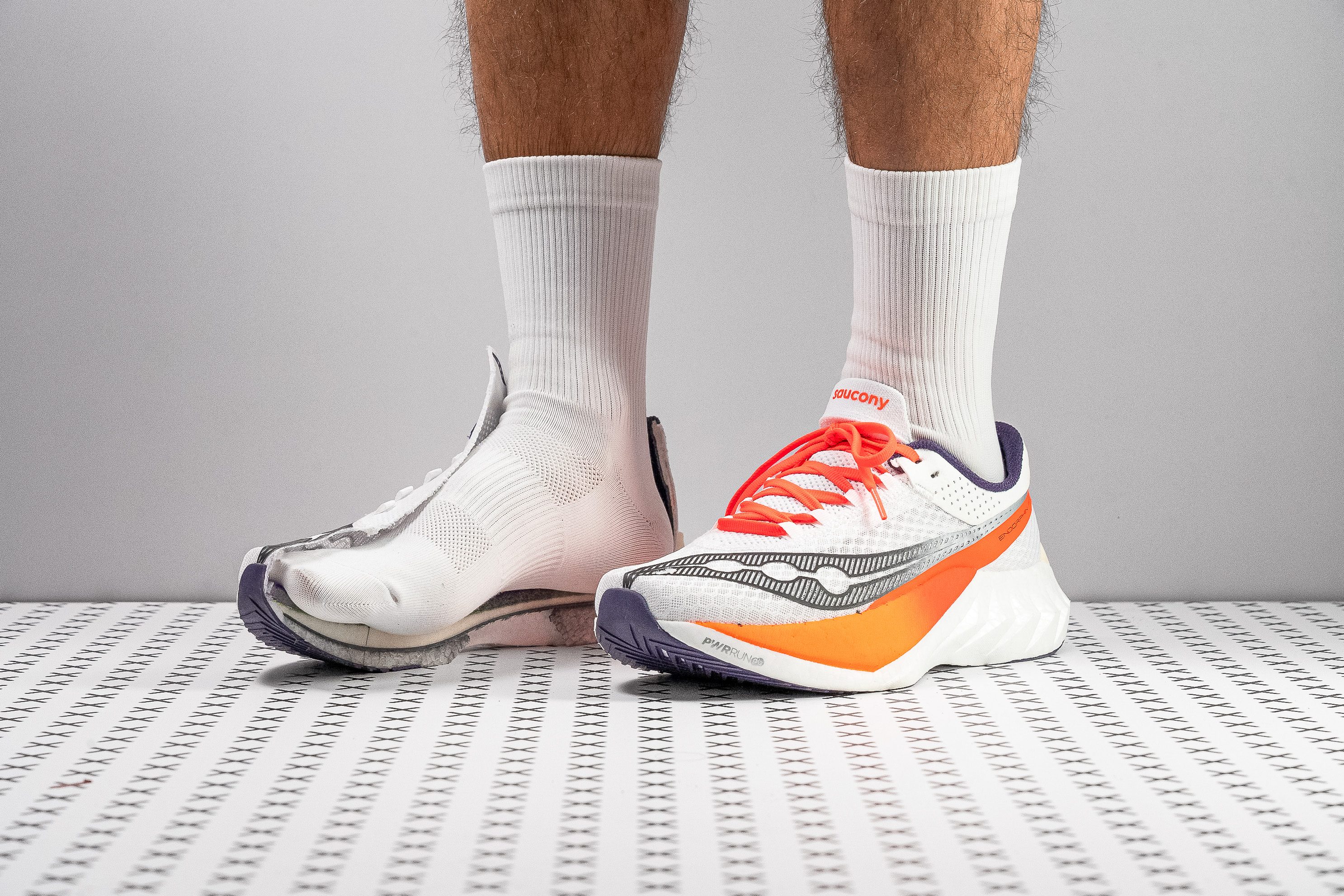


























































What makes it the best?
Among the Saucony roster, Endorphin Pro 4 earns the top spot. It has tonnes of cushioning and energy to boast while keeping its weight to a minimum. This superior combination makes it very forgiving on long races yet responsive on shorter races—a winner at every distance. Our lab results confirm what our feet truly enjoyed: running fast feels effortless with EP4.
This racer is a featherweight champion, measuring 7.8 oz (220g) on our scale—17.0% lighter than average! It even has a remarkably airy and surprisingly durable upper that gained above-average scores in the lab: a flawless 5/5 in our breathability test and an impressive 4/5 in our durability test.
The S-shaped carbon plate delivers seamless energy rebound in our strides. Our flex test reveals it’s 71.3% stiffer than average, sustaining our momentum and power efficiently together with the Speedroll technology.
Complementing the stiffness is the cushioned midsole—the true star of the show. It packs comfort and responsiveness in one. Testing for energy return, it impressed with remarkable scores of 71.7% in the heel and 71.5% in the forefoot. When it comes to comfort, we enjoyed its luscious 38.1 mm heel foam, which is able to reduce landing impact effectively, proven by its 139 SA score.
While already highly responsive, PB chasers who value every second should go for more aggressive supershoes.
Pros
- Durable upper and outsole
- Spacious upper fit
- Enhanced midsole comfort
- Great value at $225 for a supershoe
- Versatile across all paces
- Ideal for heel strikers
- More stable than ever
Cons
- Slightly heavier than v3
- Less suited for forefoot strikers
- Competitors may feel quicker
Best Saucony daily running shoes
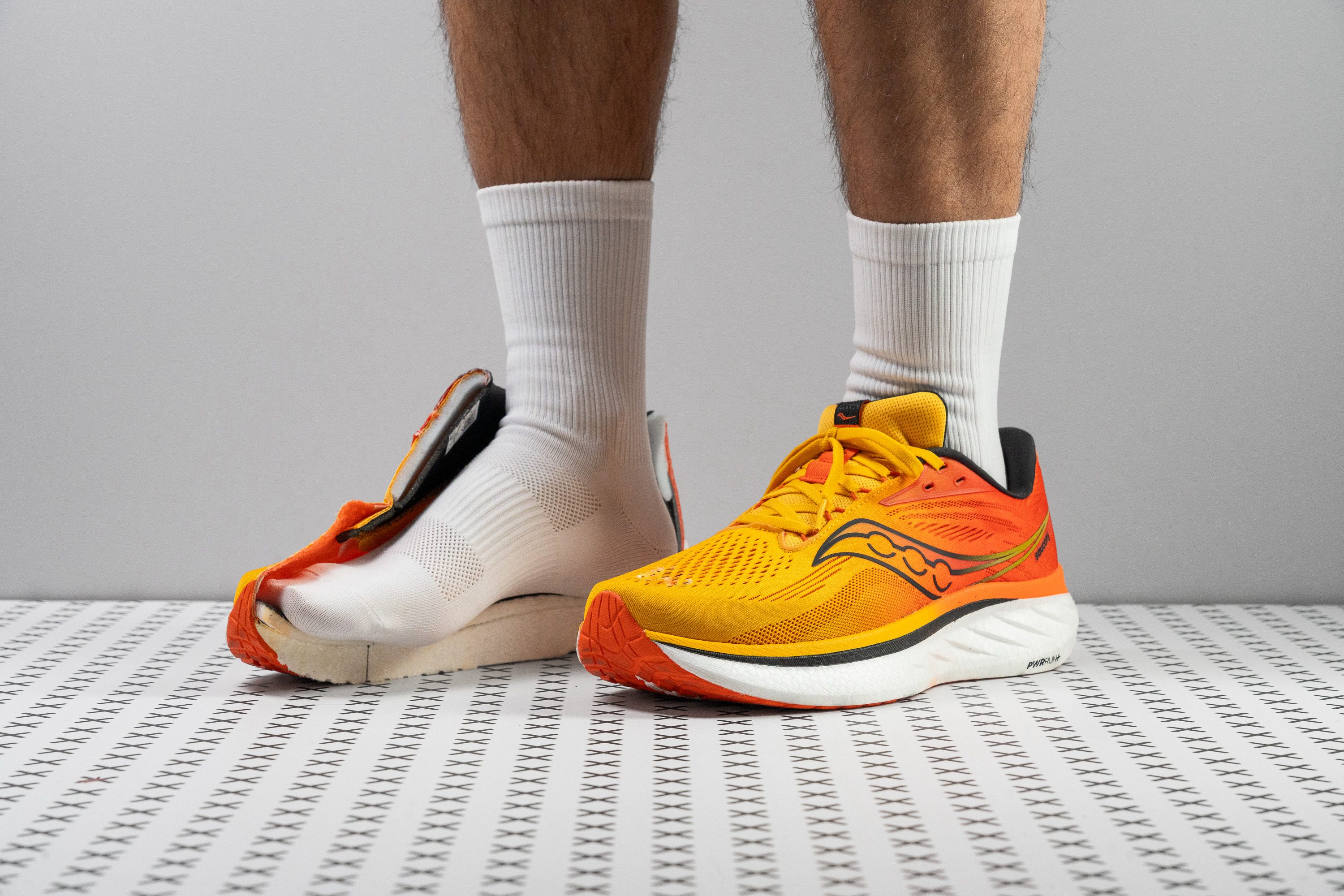















































What makes it the best?
Post-running and testing in the lab, the Ride 18 is undeniably the top daily trainer in the Saucony running line. It’s a reliable workhorse that strikes the perfect balance between cushioning, agility, and responsiveness. It has a light and flexible build with just the right amount of foam to keep us comfortable for daily mileage.
The Ride 18 stands out with its firm yet bouncy ride, boasting a 35.0/26.6 mm stack in the heel and forefoot. Our durometer readings reveal it’s 24.3% firmer than average, boosting the ride’s stability.
One of the Ride 18's key strengths lies in its effortless feel. Weighing only 9.0 oz (255g), it feels easy to pick up the pace when we want to. Its lightness is further enhanced by how easily it bends with our feet. Our flex test shows it’s 9.6% more adaptive than average. These elements enhance the Ride 18’s comfort and versatility for activities beyond running.
While the Ride 18 impressed us in so many ways, we wished for a more spacious toebox for long runs. Since it can’t handle wide or swollen feet, those who need more real estate in this area should check alternatives.
Pros
- Massive weight reduction
- Superb breathability
- Responsive ride
- Good option as an everyday shoe
- PWRRUN+ insole
- Great vertical room for toe movement
- Same price as v17
- Fantastic step-in feel
- No heel slippage at all
- Improved shock absorption
Cons
- Narrow for wide-footer runners
- Low outsole coverage
- Low outsole coverage
Best Saucony shoes for tempo runs
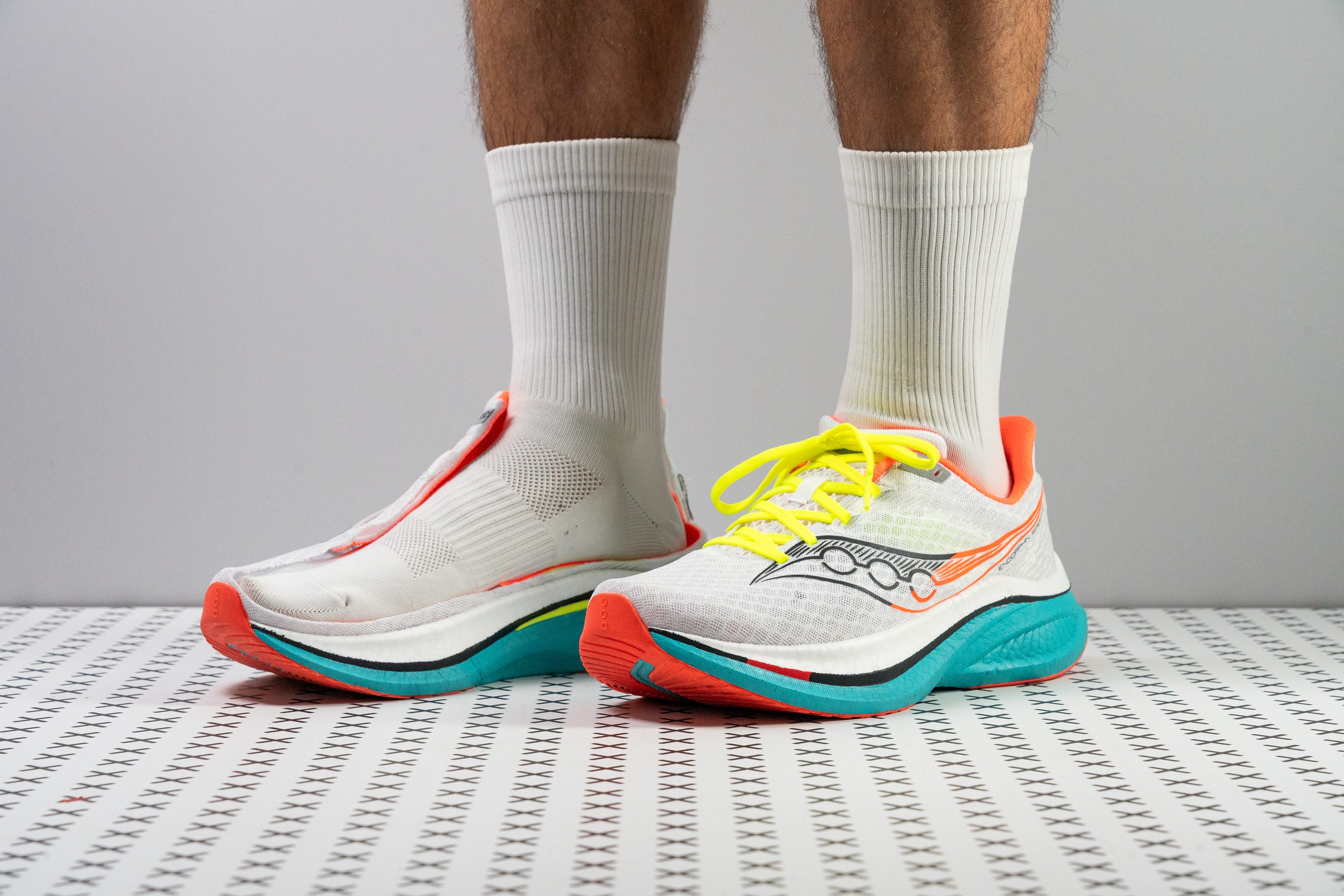













































What makes it the best?
Endorphin Speed 5 leads the Saucony pack with its incredible lightness, undeniable speed, and surprisingly forgiving ride. It delivers high performance over both short and long distances but shines best during tempo running, and our lab results verify its delightful versatility.
ES5 is much lighter and much more responsive than the average running shoe. Our scales reveal it’s only 8.5 oz (241g), 9.1% lighter than average. Upon dissecting the shoe, we discovered a nylon plate embedded in the midsole, explaining its peppy ride. What’s special about this nylon plate is that it feels more natural on foot than ultra-stiff carbon plates. Our bend test shows it’s even 14.0% more flexible than the average running shoe and even non-plated trainers.
ES5’s midsole contributes to its exhilarating speed, as evidenced by its impressive energy return scores of 73.2% in the heel and an even higher 78.2% in the forefoot.
On longer runs, the ES5 gave us comfort for miles. With an above-average stack height of 37.4/26.8 mm, the cushion is leg-saving. Both the heel and forefoot also returned above-average shock absorption scores of 132 SA (heel) and 108 SA (forefoot), proving the midsole’s capacity to reduce the impact of road running effectively.
Please note that this version offers a broader platform for enhanced stability. Runners who prioritise top-level agility should go for a more streamlined shoe.
Pros
- Supershoe-like energy return
- Fantastic upper with top-notch ventilation
- Softer PWRRUN PB foam
- Endorphin Speed DNA still present
- Great lockdown
- Versatile for multiple paces
- Smooth SPEEDROLL rocker
- Roomier and taller toebox
- Can be used for racing too
- OG special colorway looks fantastic!
Cons
- Small price hike
- Less agile than predecessors
- Durability downgrade
Saucony running shoes with the best shock absorption
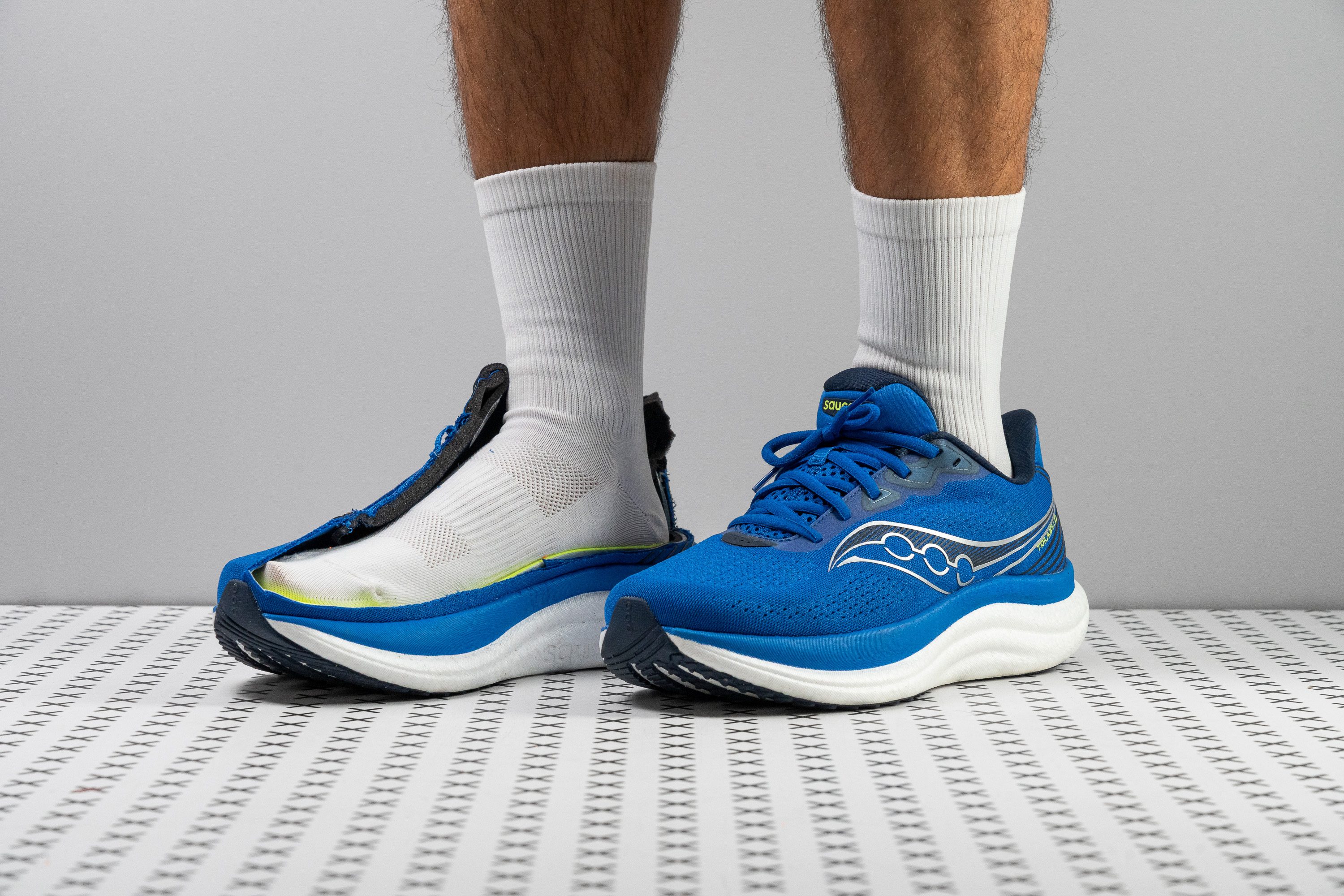












































What makes it the best?
Running with the Triumph 23 gave us confident and well-cushioned strides because of its strong grip and max stack, which we verified in the lab. It offers solid stability through its wide and stiff build, yet its superior shock absorption is what makes it shine among Saucony running shoes.
The Triumph 23 offers zero ground feel, and our calliper shows us why: its stack height is a massive 42.3/32.3 mm, ensuring a well-protected ride for any foot striker. Testing for its ability to reduce landing impact, we recorded a huge 149 SA in the heel and 136 SA in the forefoot, both outclassing their respective averages.
To ensure our steadiness, the midsole runs wider than average. Measuring 124.0/98.9 mm, it’s hard to lose balance, especially since the heel counter has no give. In our manual assessment, we awarded it the maximum 5/5 stiffness rating.
The outsole offers superior traction, proving its bite even on wet surfaces with a high 0.62 rating. Compared to the average, it’s 31.9% grippier!
Because of its thickness, the shoe feels bulky. Those seeking agility for fast corners and who prefer a weightless feel should try other options.
Pros
- Amazing energy return
- Lighter than previous version
- Huge cushioning for long runs
- Wide platform makes it really stable
- Full PWRRUN PB midsole
- Premium sockliner
- Durable build overall
- Versatile enough for daily wear
- Consistent performance in cold temps
- Excellent grip
Cons
- Price increase
- Ventilation could be improved
- PWRRUN PB may feel firm to some
- Bulkier build limits agility
Saucony running shoes with the best energy return
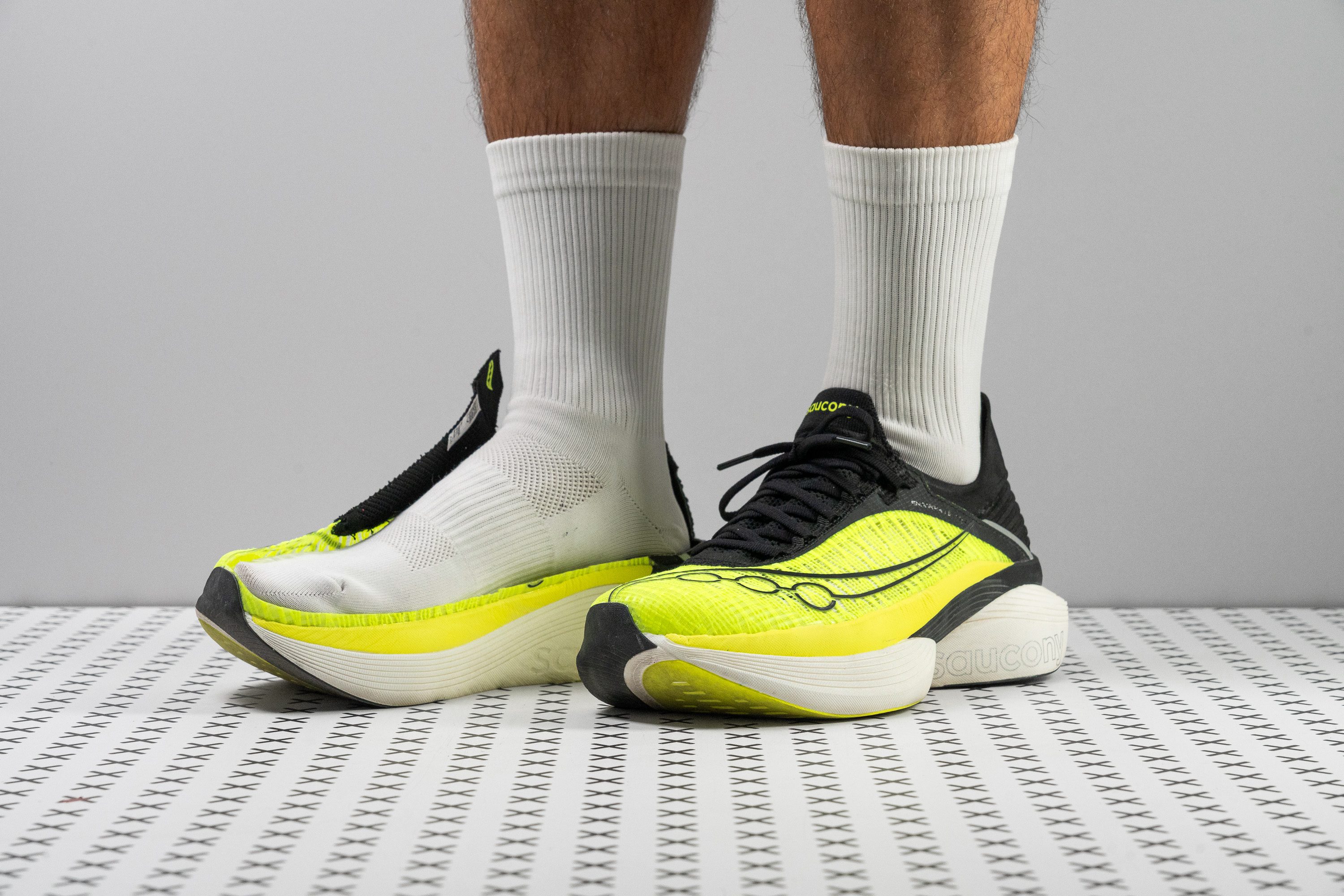















































What makes it the best?
The second iteration of the Saucony Endorphin Elite shatters lab records. This shoe features comfort and protection for countless miles, a light build, and seamless propulsion. An excellent supershoe that feels good when running at top speed, the Endorphin Elite 2 is our top Saucony running shoe with the best energy return.
EE2 likes to push the limits and matches the soul of a racer. Each mile feels faster than the last because of its mind-blowing propulsion. We drilled down the numbers in our energy return test and set new records: 80.6% in the heel and 82.1% in the forefoot. The respective averages are only at 58.6% and 60.9%, showing the extra power EE2 infuses in each stride.
It stretched its platform to the maximum legal stack height of 39.9/32.4 mm, ensuring we never run out of cushioning. On top of that, we measured solid shock absorption scores of 157 SA and 123 SA in the heel and forefoot, respectively, confirming its lasting comfort.
Aside from its responsiveness, its airy 6.9 oz (197g) build seals the deal, allowing us to glide through our runs. Its lightness helps prevent fatigue and allows us to maintain proper form.
It's important to note that EE2's tapered toebox may cause discomfort for wide or swollen feet. Best to test this pair properly before running a marathon with it.
Pros
- Record-breaking energy return
- Ultra-plush foam
- Fantastic shock absorption
- Addictively bouncy and fun feel
- Ideal for the marathon distance
- Durable and breathable upper
- Improved lockdown with knit tongue
- Stack height maxes out the legal limit
- Explosive, forward-driving ride
Cons
- A touch heavy for being an elite supershoe
- Budget-crushing price
- Lateral stability is extremely bad
- Lacks specific support for heel strikers
Best lightweight Saucony running shoes
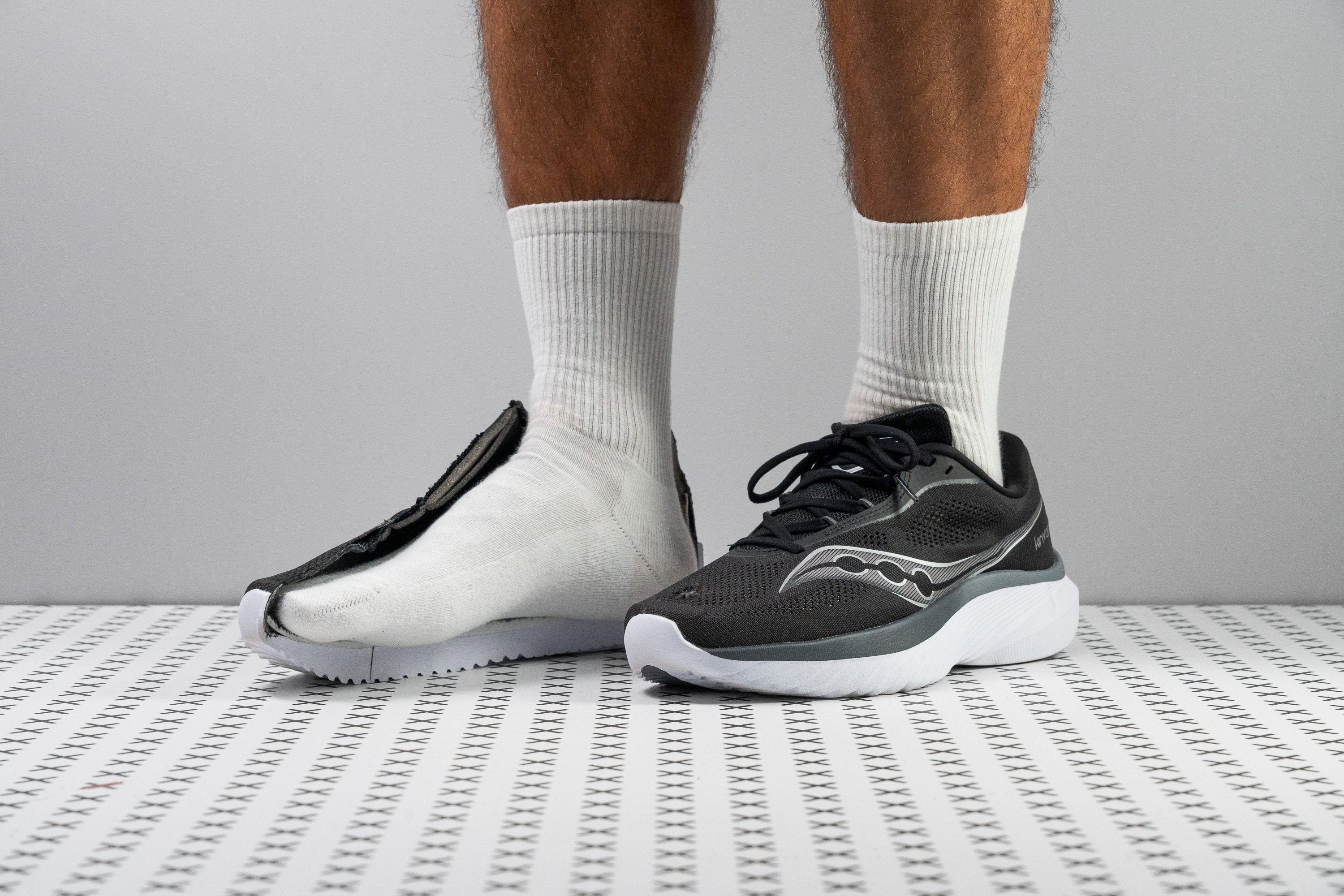

























































What makes it the best?
If we could use one word to capture our runs with the Kinvara 15, it would be effortless. Our lab agrees that its minimalist profile, airy build, and flexible midsole contribute to a breezy experience. Each stride feels smooth with this delicate trainer, making it our ultimate lightweight Saucony running shoe.
Kinvara 15 easily melted away with our feet even as we ran longer. We instantly felt its weightlessness but our scales further confirm it’s only 6.8 oz (194g), 26.8% below average. Adding to the freeing experience is its malleable midsole that gives in to our movements. Our bend test confirms it’s 53.3% more flexible than average, enhancing comfort.
The shoe’s high level of flexibility can be attributed to its low configuration of 27.9/23.5 mm. It gave us heightened ground connection, yet enough cushioning from ground impact. Moreover, it features a low 4.4 mm drop, 48.8% lower than average, which produces a more natural running feel.
However, its lightness and versatility sacrificed a more durable outsole. With its rubber being softer and thinner than average, we don’t expect it to last very long.
Pros
- Easy on the wallet
- Feels great at faster paces
- Really fun
- Retains classic Kinvara vibes
- Stable, low-to-the-ground ride
- Suitable for daily wear
- Exceptionally lightweight
- Enhances foot strength
- Top-notch breathability
Cons
- Limited to short runs
- Not ideal for heel strikers
- Toebox durability
- Minimal outsole rubber coverage
Saucony running shoes with the best arch support
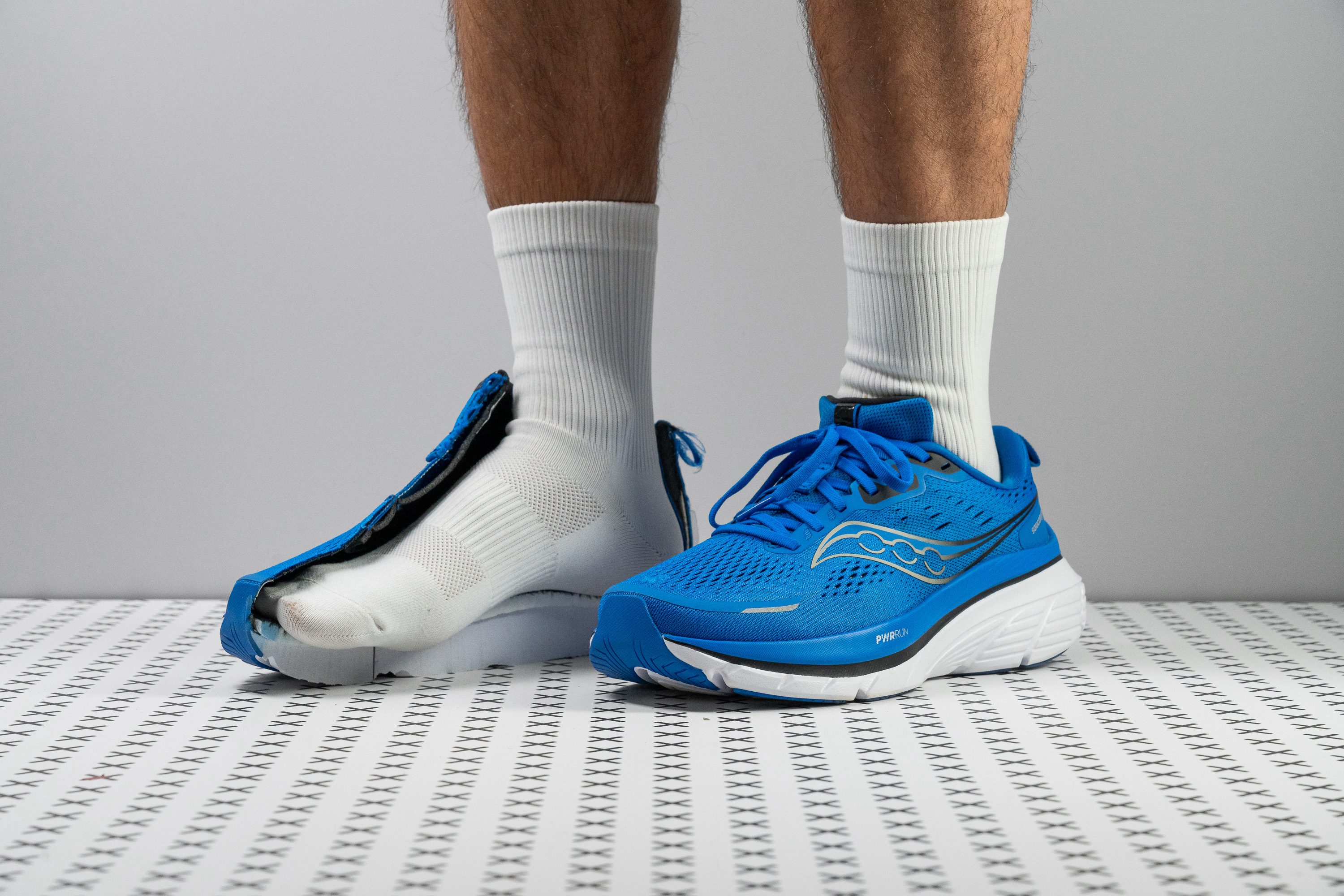

















































What makes it the best?
Our arches received lots of support and comfort from running with the Saucony Guide 18. As its name suggests and is backed up by lab tests, it guides our foot alignment with its subtle stability features, without losing its adaptive nature. The cushion offers a good mix of comfort and bounce, and delivers the best arch support among Saucony running shoes in our roster.
Guide 18 offers enhanced surefootedness through its midsole sidewalls and expansive base. Using our calliper, we measured a massive 121.9/105.0 mm, giving us lots of room to find our balance securely when landing.
The midsole feels well-balanced, standing taller than average at 36.0/27.7 mm for extra protection. The substantial heel flare smoothens our transitions, while the responsive foam improves turnover. In our energy return test, the heel scored an impressive 61.3% and the forefoot at 62.0%.
Despite its undeniable support, Guide 18 feels good for daily training because of its loose midsole. In our bend test, it emerged 12.0% more flexible than average, boosting comfort and versatility.
However, its focus on flexibility leaves a lot of foam exposed, which gives us durability concerns. Those who prefer a shoe that will surely last could try more reinforced options.
Pros
- Upper now has exceptional breathability
- Stable yet non-restrictive ride
- Cushioned enough for long runs
- Handles walking too
- Impressively wide platform
- PWRRUN PB insole
- Secure and comfortable lockdown
- Excellent heel rocker design
Cons
- Too much exposed foam on outsole
- Feels bulky and not agile
- Midsole runs a bit firm
- Midsole runs a bit firm
Saucony road shoe collections: overview and purpose
Saucony has a lot of shoe collections under its belt and we’re here to deliver a concise overview of them. Further below, we dig deeper into specifics and lab data we have on Saucony running shoes.
Saucony neutral running shoes
These shoes are great if you’re a neutral pronator or a supinator (you underpronate). Some of these shoe lines have 10+ shoe iterations, which shows how popular and welcome they are in the running world.
|
Neutral road running shoe lines from Saucony |
|
|
Kinvara |
Affordable and lightweight trainer for easy-to-fast runs. Still resisting the high-stack-shoes trends. |
|
Freedom |
Light, flexible, low to the ground and low heel drop - better for shorter distances. |
|
Ride |
Flagship daily trainer. A workhorse. Very durable and versatile across different distances. It’s the middle ground between Triumph and Kinvara. |
|
Triumph |
Premium, maximally cushioned daily cruiser, perfect for building up the mileage. |
|
Axon |
Easy-to-tempo runs, this workhorse is a true bang for the buck. |
|
Endorphin Shift |
High-stacked daily trainer, part of the famous Endorphin trio (Shift, Speed, Pro). |
|
Endorphin Speed |
Bouncy shoe equipped with a nylon plate, made for tempo runs but excels at all paces. |
|
Endorphin Pro |
Carbon-plated race-day supershoe. Superb for long-distance training. |
|
Endorphin Elite |
Exceptional energy return, stability and lightweight packed in a premium racer. Ideal for marathons, both in wet and dry weather. |

Saucony stability running shoes
These shoes are aimed at runners who overpronate. The main difference between stability and neutral shoes is that stability ones use geometrical or trademarked technologies to stabilise the ankle (so it rolls inward less).
CenterPath Technology™
This technology combines a wider platform, higher sidewalls, and asymmetric profile to provide a better ride for overpronators.
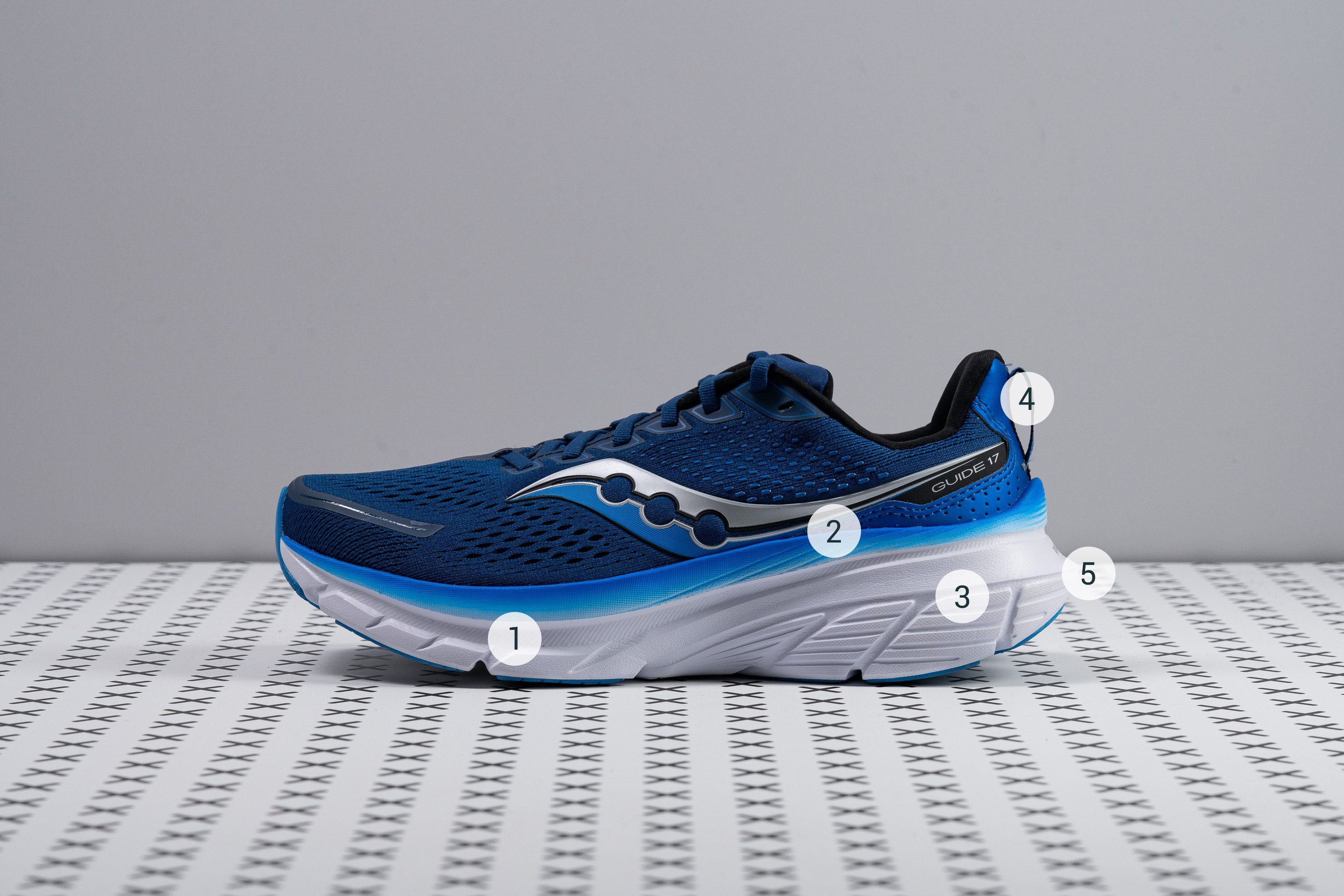 Guide 17 features CenterPath technology. There’s no medial post, but we notice 1) Very wide platform, 2) Sidewalls, 3) Sole flares, 4) Stiff heel counter, and 5) Asymmetrical heel at the back
Guide 17 features CenterPath technology. There’s no medial post, but we notice 1) Very wide platform, 2) Sidewalls, 3) Sole flares, 4) Stiff heel counter, and 5) Asymmetrical heel at the back
|
Stability road running shoe lines from Saucony |
|
|
Tempus |
Mild stability that works wonders for those who slightly overpronate or don’t overpronate but want a very stable shoe. APMA certified. Does not feature CenterPath technology. |
|
Guide |
Mild-to-moderate (depending on the iteration) stability version of the Ride. Reasonably priced, for daily runs only. CenterPath technology. |
|
Hurricane |
Max-cushioned, very protective and responsive. Stability at a competitive price. Features CenterPath technology. |
|
Omni |
Maximal stability. Doubles as a walking shoe. APMA certified (The American Podiatric Medical Association, APMA Seal of Approval/Acceptance Programme). |
Foams in Saucony running shoes
There are 2 types of running shoe foams: standard and premium. Standard foams are more durable, affordable, and stable, but less responsive. Premium foams are insanely responsive and leg-saving, but also expensive and less durable.
Here are the common Saucony foams and their features:
|
Foam |
Type |
Top feature |
Drawback |
|
PWRRUN (EVA + TPU) |
Standard |
Versatile |
Boring |
|
PWRRUN+ (TPU) |
Standard |
Energy return |
Weight |
|
PWRRUN PB (Pebax) |
Premium |
Comfort |
Energy return |
|
PWRRUN HG (Pebax) |
Premium |
Performance |
Maybe too firm for some |

The first thing runners relate comfort to is the softness of the foam. We measure the midsole softness with a shore A durometer.
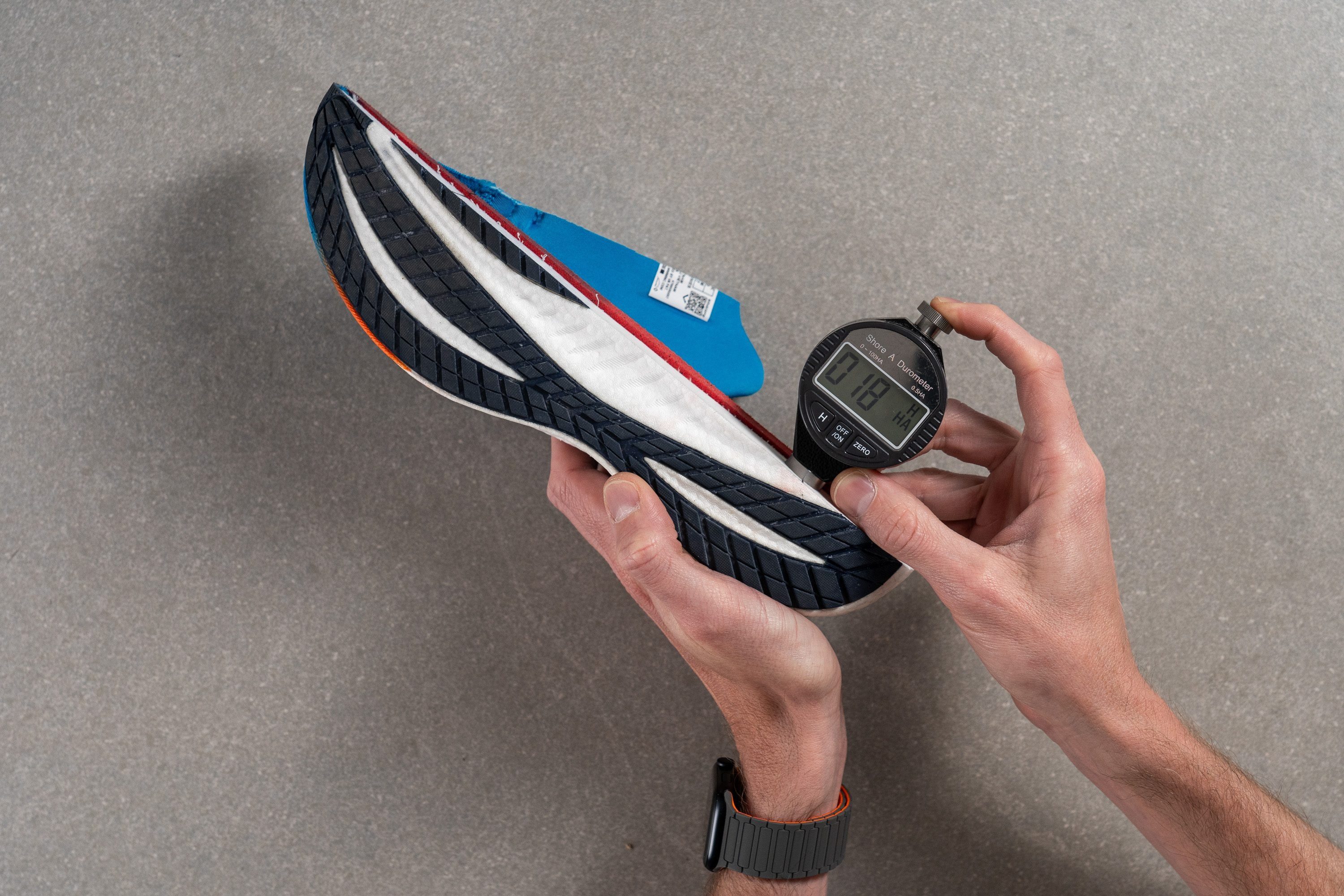
Lower readings on the durometer tell us that the foam is soft and higher numbers indicate a firmer foam.
Shock absorption and energy return of Saucony running shoes
Softness is only a small part of the cushioning story. We prefer emphasising 2 other features: shock absorption and energy return. We actually test both at the same time, honouring the ASTM F1976-13 methodology. This means that the test is standardised; all shoes get the identical treatment!
What can you do with these 2 numbers? Well, shock absorption is all about absorbing the impact. The better the midsole at that job, the less stress is sent to your legs. But, one shoe can have very good shock absorption, combined with a low energy return, which would mean it is very bad at bouncing back after the foam has been landed on. That's where energy return enters the scene: the higher the number, the more responsive the foam!
It's important to note that daily trainers and running shoes for beginners prioritise comfort, stability, durability, and a lower price. Because of this, they are rarely found at the top when it comes to shock absorption or energy return.
Grip in Saucony running shoes
Grip depends on the outsole material - whether there's a lot of rubber coverage or some exposed midsole that would slide on wet surfaces, the design of the outsole, whether there are some grooves and channels, the softness of the rubber, and so on. Fortunately, we have a specialised machine that we use to test traction in running shoes.
Traction lab test
To test traction, we follow the SATRA TM144 methodology. This means that we use a 7-degree wedge to angle the shoe and we press the shoe against the wet surface with a force of 500N.
The result of this test is a dynamic coefficient of friction. The higher it is, the better. But, if you plan to regularly run in wet weather, we recommend looking for numbers higher than 0.45.
Outsole durability
And last but not least, we press a Dremel against the outsole. Always at the same pressure, duration, and RPMs. Then we look at the dent the tool has made.
The deeper the dent, the less durable the outsole in question is. We measure the depth of the dent using a tyre tread gauge.

Carbon-plated Saucony running shoes: lab data and experience
In case you’re not new to the world of carbon-plated running shoes and you already checked whether those are a good idea for you, let’s dive in.

Race shoes with a carbon plate are usually high stacked, soft, and stiff. To discover how soft, we stick a shore A durometer into the foam. The lower the reading, the softer the midsole.
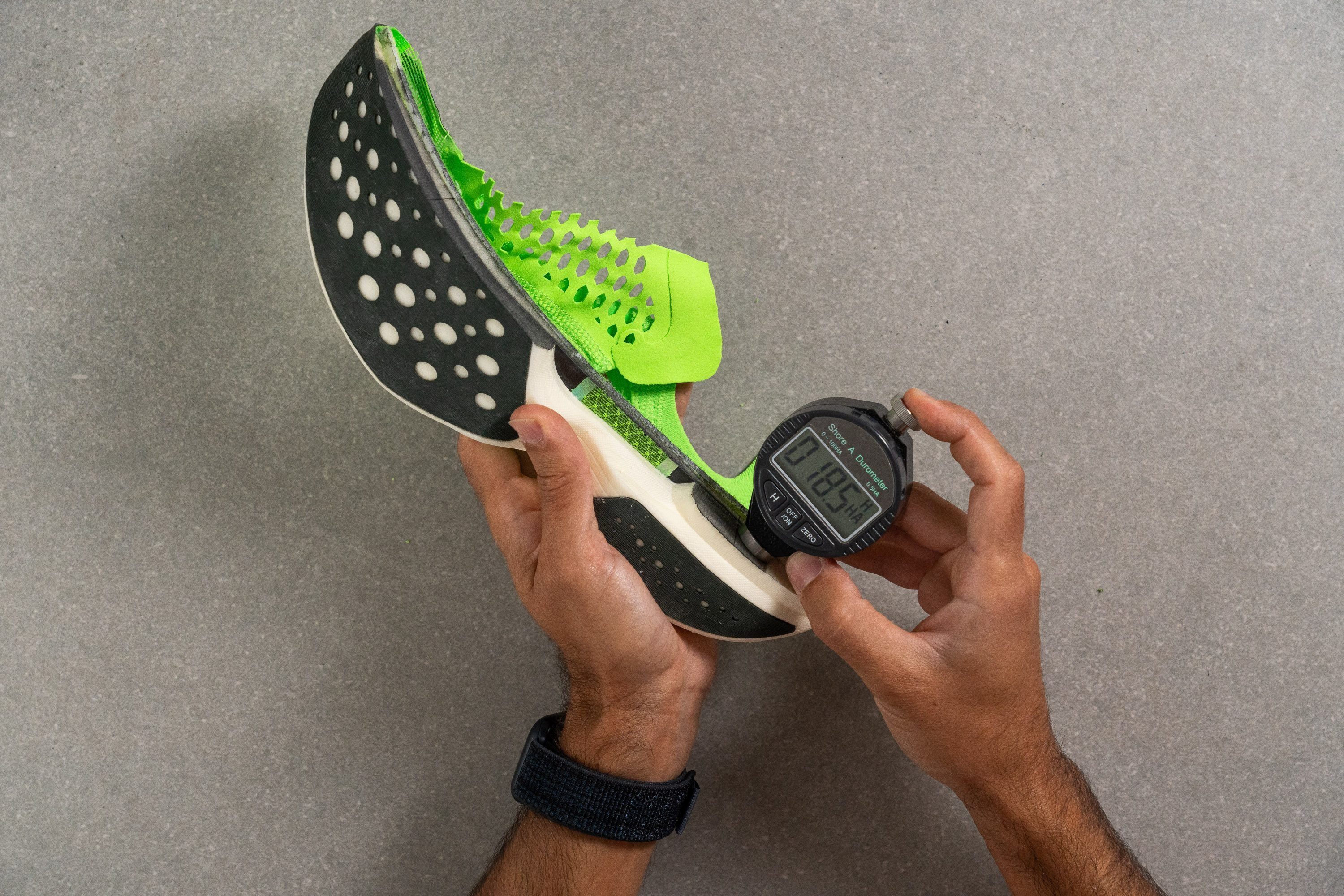
This has to be done on a shoe cut in half, otherwise the readings are very off. And, to measure the stiffness, we clamp the forefoot to the surface and bend it 30 degrees. Shoes that need more force to be bent are stiffer, and those that need less force are more flexible.
Saucony trail running shoes overview
What you can usually expect from Saucony trail running shoes:
- Deep lugs for technical terrain, mud, snow
- PWRTRAC™ rubber
- Rock plate for additional protection.
|
Saucony trail running shoe lines |
|
|
Peregrine |
Flagship model. High-performance trail runner with outstanding grip, durability, and lockdown that works at any speed and terrain. Comes with a rock plate for extra protection. |
|
Endorphin Edge |
Carbon-plated trail shoe that prioritises speed! It’s also very comfortable, light, and versatile across short to long distances. |
|
Endorphin Trail |
[Recalled by Saucony] Aggressive, ultra-marathon-friendly, with no rock plate. |
|
Endorphin Rift |
Cushioned, rockered, sock-like, with very deep lugs (great for mud, technical terrain). |
|
Xodus Ultra |
Very stable, cushioned, and versatile trail shoe. Works great for long distances, even ultras. |
Protection and grip in Saucony trail running shoes
We always measure the depth of the lugs as that’s the main determining factor when it comes to choosing the terrain.
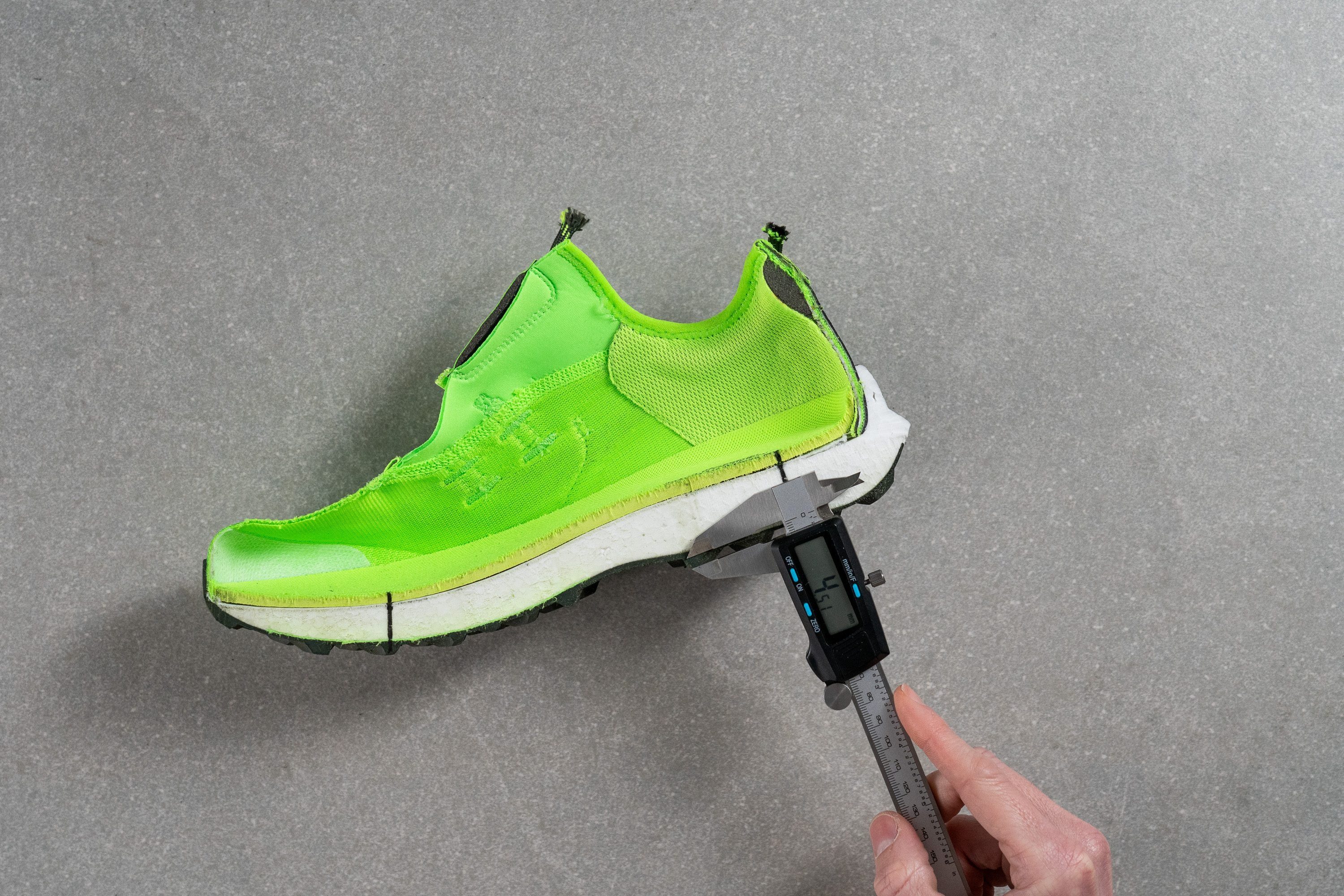
Deeper lugs (4mm and above) are great for mud, slush, soft ground covered with debris.
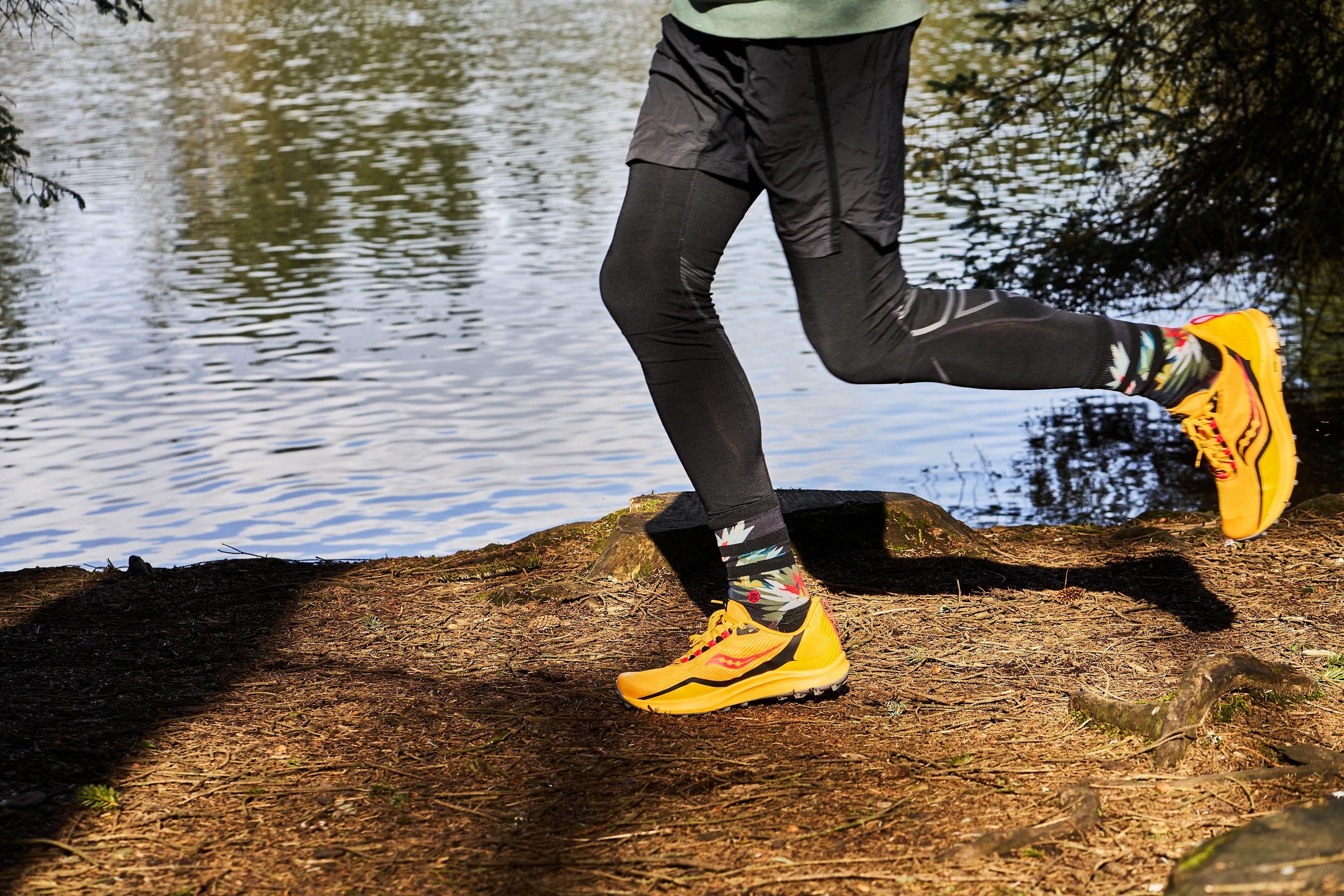
Shallower lugs (3-4mm) are more versatile but not great for demanding conditions. They work well on hard-packed trails, flat large stones, etc. Shallow lugs (less than 3mm) are saved for hybrid shoes that work well for road-to-trail adventures.

